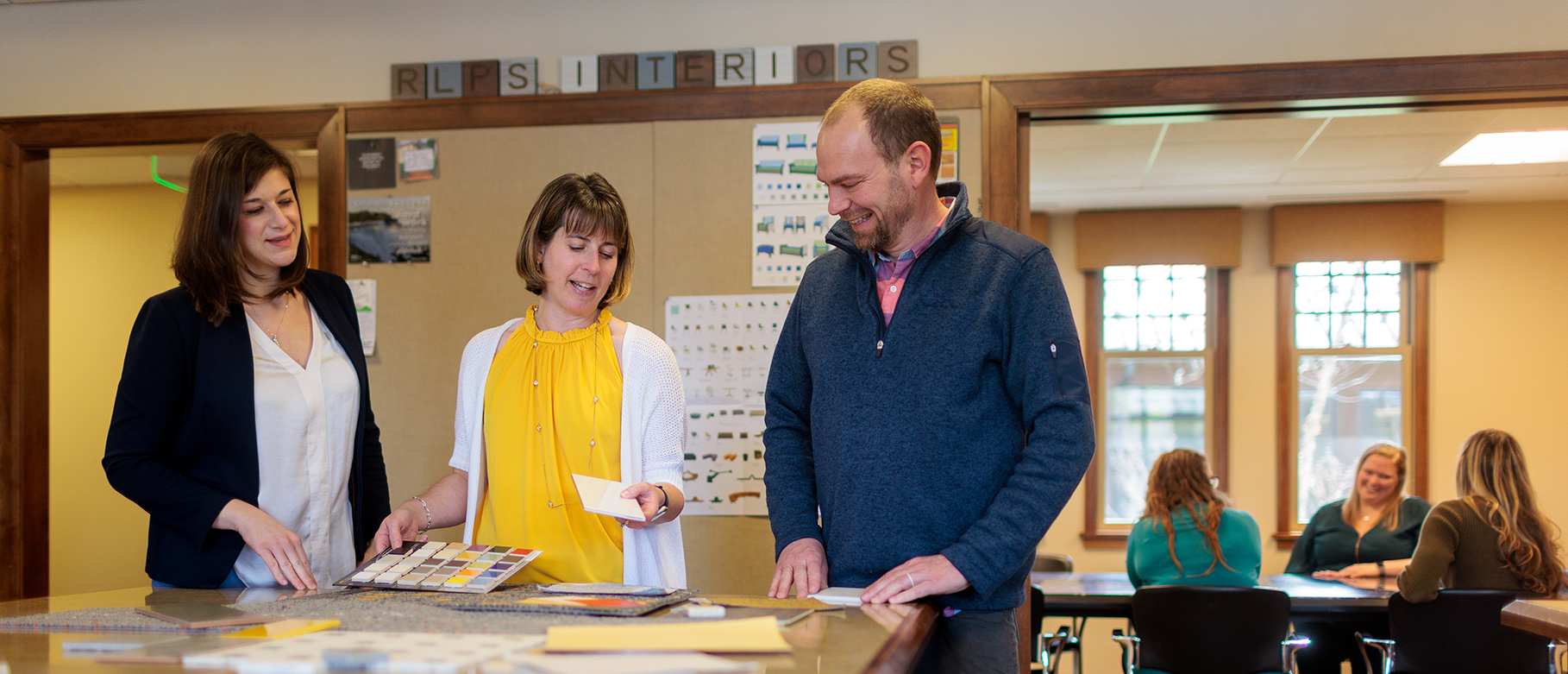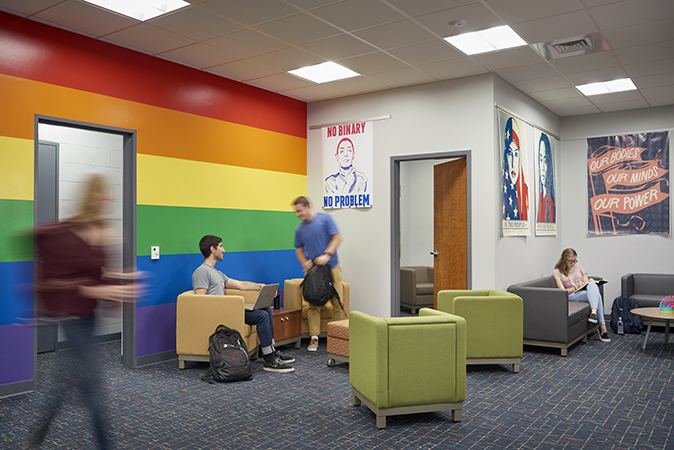Interior Renovations: Budget-Friendly & Brand-Building with Big Benefits
November 9, 2022
Higher education institutions understand the importance of evolving and changing with the times; making campus updates is among the top priorities from year to year. Rather than initiate a large construction project, institutions are staying current with small-scale interior renovations to underutilized areas of campus that need reimagining.
Combining interior renovations with upgraded furniture can provide a large impact through projects that can be completed in a shorter timeframe and don’t exhaust the annual budget. These quick-hitting projects aim to improve the value an institution provides to its students and reinforce the branded experience intended for campus.
Enhance Underutilized Space on Campus
Existing campus buildings often have underutilized rooms that can be enhanced through strategic space planning. Identifying appropriate finishes and furnishings can help adapt a space to specific user preferences or assist in making spaces feel more appealing to the masses. Post-pandemic, we have seen an increase in underutilized space being converted to flexible commons space within buildings to accommodate students and their varying needs, such as:
- Collaboration Spaces: Flexible furniture that is easily rearranged encourages collaboration and fosters a sense of community between students. The addition of digital communication boards, workstations and stable surfaces for laptops or other devices assist in the transfer of ideas. The should be outfitted with wireless technology, charging stations and enough outlets to accommodate user needs. These items are easily accommodated with furniture solutions.
- Individual Study Areas: With the appropriate furnishings, large open areas can be space planned to create inviting areas to study before an exam. This accommodation can also act as a safe space for students looking for a quiet area to relax and de-stress.
- Commuter Amenities: Although commuter students do not spend a great deal of time on campus, thoughtful interior updates that focus on them can provide a sense of belonging and community. Renovated spaces specific to commuter students include meeting rooms for collaboration, technology-equipped lounges for studying and hanging out between classes, and cafes or other accessible campus dining areas.
Save Time and Money
Interior renovation projects generally have shorter construction timelines and cost less than a new building. Interior renovation work is also less susceptible to weather negatively affecting the construction schedule. This allows for updates to be completed during any month throughout the year with less disruptions in construction.
Financially, renovations generally provide a savings of $100-$150 SF versus new construction according to Tradeline, Inc. The return on investment period is also much shorter with renovations, since the lifecycle of the original building is extended and efficient use of space is gained with less of an expenditure.

Enhance Campus Offerings
Completing updates to interior spaces that enhance and add amenities to campus offerings help bolster admissions and retention. When spaces are intentionally designed to have a “wow” factor and be functional, students and their families can more easily envision themselves on campus.

We have also seen interior renovations help keep people on campus longer, leading to an increase in revenue. For example, additional amenities provide a reason for students to continue to live on campus instead of moving off campus. Enhanced amenities give professors and students a reason to spend more time on campus rather than seeking the same services from off-campus providers.
Represent an Institution’s Brand and Culture
Branding influences how an institution is perceived by the public. When done successfully, branding on campus positively affects the visitors’ experience and even gives a glimpse into the culture of an institution. These design elements can help differentiate your institution from the many other competitor institutions vying for increased enrollment and donor support.
From a designer’s perspective, we want to understand when an institution is looking to display a branded experience or reinforce their culture for end-users of a space. For example:
- Painting interior spaces with branding colors easily identifies a space or area of campus as belonging to and being a part of the institution. This can be especially important on satellite campuses or when a campus extends into a dense urban setting.
- Finish selections in instructional spaces can reflect the area of study to add further context to the space and align it with certain departments or colleges. For example, metallic surfaces and an industrial look may be appropriate for a science building.
- For welcome centers, indoor arenas and sporting venues, the history of the institution or sporting program can be powerfully conveyed through graphics, signage, and monuments.
There are many things to consider when contemplating an approach to projects on campus but given all the variables that are currently affecting projects on campus, interior renovations are a more than viable option.
Carson Parr, AIA, LEED AP BD+C, WELL AP is a partner at RLPS Architects. He leads the firm’s higher education practice, helping clients with campus programming and planning, project design and construction. An NCARB registered architect, Carson, holds a Master of Architecture, Community and Urban Design, from Pennsylvania State University. He serves as a student mentor and is a past president of AIA Central Pennsylvania, is co-chair of Central Pennsylvania Architect’s Foundation Fund (CPAFF) and is a York College of Pennsylvania Graham School of Business Dean’s Advisory Council Member.